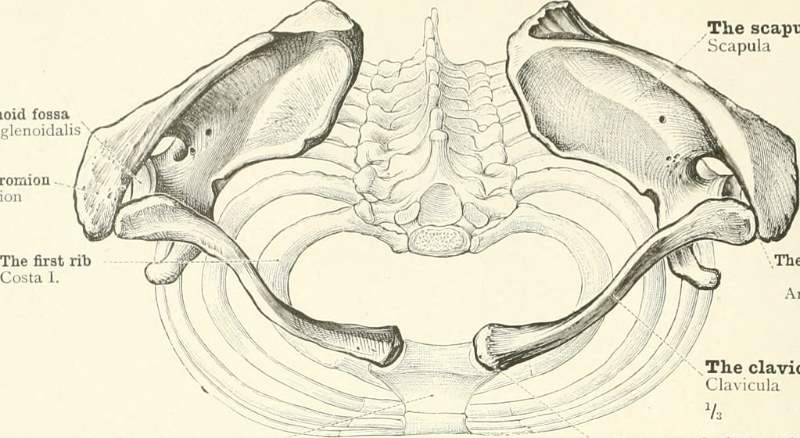
Clavicle
Introduction
| • Also called as collar bone. |
| • Located at the junction of the root of the neck and trunk. |
| • It is the only bone that lies horizontally on the anterior aspect of the body. |
| • It is only bony attachment between the trunk and the upper limb. |
Function
• It acts as a strut for holding the upper limb far from the trunk so that it can move freely.
• It helps in the transmission of force from the upper limb to the axial skeleton.
Peculiarities
| It is only the long bone that lies horizontally. |
| It has no medullary cavity. |
| It is subcutaneous throughout its extent. |
| It is the first bone to ossifying at the age of 5th – 6th week of intrauterine life and last bone to complete ossification at the age of 25 years. |
| It is the only long bone that has two primary ossification centers. That's why called as modified long bone |
| It has two types of ossification, ie. the whole part except medial end is intra-membranous ossification and its medial end is intra-cartilaginous ossification. |
Parts of Clavicle:
• Medial end
• Lateral end
• Shaft
Medial end
• It is enlarged and quadrilateral.
• It articulates with the clavicular notch of manubrium sterni
& form a sternoclavicular joint, which is a saddle type of synovial joint.
Lateral end
• Almost Flattened end
• Articulate with medial margin of the acromion process
and form acromioclavicular joint (Plane type of Synovial Joint)
Shaft
It has two parts
- Lateral one third
- Medial two-third
Lateral 1/3 part of shaft
• It is concave forward.
• It has two surface
- Superior surface
- Inferior surface
• It has two border
- Anterior border
- posterior border
|
• Superior surface
Gives attachment to the deltoid and trapezius.
|
| • Inferior surface Conoid tubercle and trapezoid ridge present in this surface which gives attachment to the conoid and trapezoid part of coracoclavicular ligament. |
| • Anterior border Gives origin to the deltoid muscle. |
| • Posterior border Provides insertion to the trapezius muscle |
Medial 2/3rd part of shaft
• It is convex forward.
• It has 4 surfaces
- Anterior surface
- Posterior surface
- Superior surface
- Inferior surface
| • Anterior surface - Gives origin to the clavicular head of pectoralis major. |
| • Posterior surface - Gives origin to the sternohyoid muscle - Related to the trunk of the brachial plexus and third part of the subclavian artery. |
| • Superior surface - Gives origin to the clavicular head of the sternocleidomastoid muscle. |
| • Inferior surface - Subclavian muscle is inserted into the subclavian groove on this surface. - Clavipectoral fascia is attached to the margins of the subclavian groove. - Gives attachment to the costoclavicular ligament. |
Also read: Anatomy Question Collection
Also read: Anatomy Questions & Answers
Also read: Anatomy notes

Comments (0)